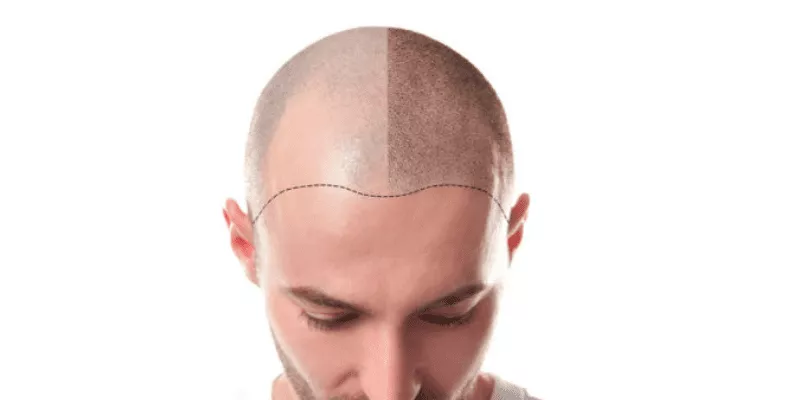How Long After Hair Transplant Can You Use Rogaine?
How long after hair transplant can you use Rogaine? Men who are going bald can take one of two medications. Rogaine is a drug that can be put on the skin. It can be used in two strengths without a prescription. Finasteride is a drug that you have to get from a doctor and take by mouth once a day. Both treatments are about as good as each other at keeping hair that has been lost due to androgenic alopecia or growing it back. The area of the scalp that is most likely to respond to treatment is at the top, while the front of the scalp and the hairline show little to no hair growth.
These medicines are great for treating this mild but emotionally damaging condition because they have few side effects. Hair is a big part of how we feel about ourselves. In their search for a cure for baldness, men were willing to try almost anything and spend a lot of money.
Rogaine and Propecia are the best-known and most powerful drugs that men can take to stop hair loss. Rogaine increases blood flow to the hairline, which helps hair stay healthy. Finasteride is used to treat the enzyme that causes MPB. Together, they have a great track record of beating the two bad guys of baldness.
How Long After Hair Transplant Can You Use Rogaine For Hair Growth?
Rogaine is a prescription drug that was first taken by mouth to treat high blood pressure. Scientists have recently found that putting a minoxidil solution directly on the scalp can make hair grow faster. Minoxidil’s topical hair loss treatment would theoretically result in greater hair growth for women than for men. Minoxidil-Rogaine is the most common type of minoxidil. Women are told to use 2 percent minoxidil solution twice a day or 5 percent minoxidil foam once a day.
Minoxidil, like finasteride, has been shown by science to make hair grow faster, and men with male pattern baldness might be able to grow back “missing” hair. Also, there is some debate online about whether or not minoxidil works on hair along the hairline. In the studies done to get FDA approval, minoxidil was mostly tested on the top of the scalp and the crown. Because of this, many people think it only works in these areas. Because of this, there have been a lot of reports that minoxidil is important for encouraging hair growth all over the scalp, including at the hairline.
What Is Rogaine?
Rogaine (Minoxidil) is a drug that is often used to stop hair loss or grow back lost hair. Please keep in mind that Rogaine usually only works to bring back the hairline in men who are going bald. It doesn’t work on other types of hair loss. People think that Rogaine works better on small patches of hair loss than on large areas of the scalp. This means that using Rogaine early on is likely to give you the best results.
As a simple solution, Rogaine helps by widening the blood vessels and making it easier for blood to flow to the part of the body where it has been applied. When your blood flows through your skin, oxygen and nutrients that keep your hair and follicles healthy are carried into your bloodstream. And in the long run, this stops the follicle from being hurt any more, which tries to stop the hairline from going down.
How Does Rogaine Work?
So, we could say that Rogaine helps open up the blood vessels and make more blood flow through them. This should let more oxygen and nutrients from the blood into the hair follicles. Healthy hair is more likely to grow faster and have follicles that are bigger and thicker. One common way to improve hair follicles and speed up growth is to increase blood flow. Several other drugs and treatments that work also use similar methods. Minoxidil was not made to treat hair loss at first. It was more of a way to treat high blood pressure. After finding some hair that grew on its own, researchers looked into whether it could be used to treat hair loss.
Most of the time, minoxidil is used as a liquid or foam. This process should be done many times a day. It is also a drug that can be taken by mouth. This is only okay for the medicine in its generic form. Rogaine is a medicine that has been tested in the lab.
Even though there may not be a magic pill that makes your hair grow back, rogaine is one of the treatments that has been shown to help stop your hair from falling out. This main drug was used to stop hair loss from getting worse. It was made for other things, but people started to use it to treat hair loss.
Does Rogaine Stop Male Pattern Baldness?
Minoxidil can sometimes stop or slow hair loss. About 40% of men who use it start to grow hair between three and six months later. But only people under the age of 40 have been shown to benefit from it. Like some other medicines, minoxidil works best when hair loss has just started. Rogaine has been approved to be used to treat baldness. It does not cure baldness, though. All it does is help hair grow and stay healthy.
It’s important to know that if you don’t use minoxidil, your hair will start to fall out more quickly than usual. On the other hand, there isn’t much evidence that Rogaine can help with hairline receding. In the studies that showed how well the drug worked, tests were done on the top of the head. Some people say that the hairline is stronger.
How long after hair transplant can you use Rogaine? A lot of people all over the world have these kinds of hair loss. So it’s not surprising that a lot of people want to find medicines that can help them slow down or even stop the decline. Minoxidil is a well-known drug that is used in many brand-name treatments for hair loss. If your hairline is getting thinner, you might be wondering if this treatment will help. Minoxidil works by making the blood flow better to the area where it is put. If you put it on your scalp, your hair will grow much more quickly and have a lot more of them. Also, there’s no reason to think that minoxidil won’t work on a receding hairline.
How Important is Hair Transplantation After Care for Long-Term Results?
The hair transplantation is a standard and increasingly popular procedure that many men and women opt for to restore their natural hair. The procedure involves transferring healthy hair follicles from the back or sides of the scalp to balding areas. Although it is a relatively safe and straightforward procedure, take proper care of your hair after the surgery to ensure optimal results. The success of a hair transplant depends mainly on how well you take care of your scalp and newly transplanted hair follicles during the healing process. With proper hair transplantation after care, your hair may become smooth, firm, and even fall out. Here are some tips to help you maximize your hair transplant results and maintain your new look.

One of the most important steps in ensuring long-term success with a hair transplant is following your hair transplant surgeon ’s instructions for hair transplantation after care. Your doctor will likely provide you with detailed instructions for taking care of your scalp, including when and how often to wash it, as well as what products you should use. In addition, they may provide you with medications to reduce inflammation and help facilitate healing.



